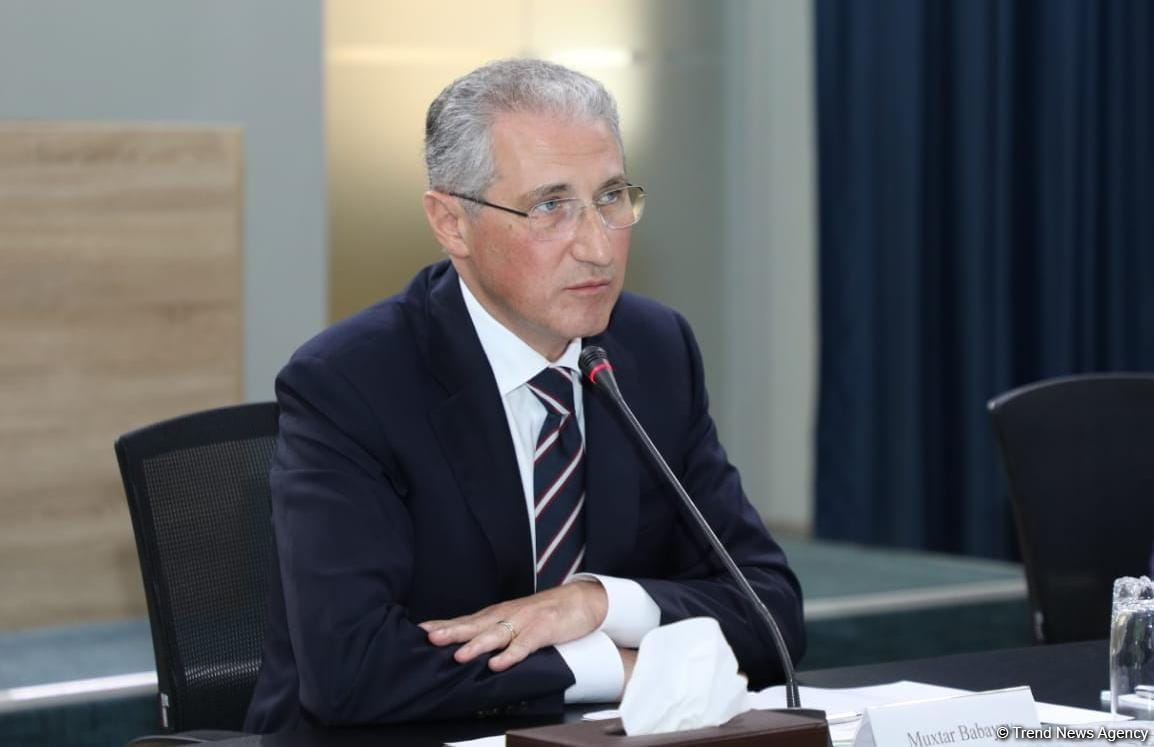BAKU, Azerbaijan, November 4. The Armenian occupation resulted in the destruction of over 54,000 hectares of forest areas in Azerbaijan, the country's Minister of Ecology and Natural Resources, Mukhtar Babayev said, Trend reports.
He made the remark during public hearings in the Azerbaijani Parliament themed "Combating the Mine Threat: The Impact of Explosives on the Ecosystem.".
The minister has briefed on the development of a program for reforestation and opportunities for the swift implementation of reforestation efforts.
As he explained, this process should be coordinated with the demining plan, and work in this direction has already begun in the Zangilan, Jabrayil, and Fuzuli districts.
Babayev also noted a need for inventorying the forest lands on the liberated territories to determine their boundaries, as well as the species composition, age groups, and forest resources.
"Currently, out of a total area of 260,000 hectares of forest land in the region, only 19,000 hectares have had forest management work carried out using remote sensing methods in the Zangilan district. Summing up the work on forest management, organizing protective measures, and managing these areas is of great significance," he explained.
"The restoration of specially protected natural areas is also a priority. To achieve this, it is necessary to determine the boundaries of state nature reserves and sanctuaries, inventory the natural objects within them, and take necessary protection measures," the minister stated.
He mentioned that, for the purpose of implementing the decree of the President of the Republic of Azerbaijan, Ilham Aliyev on the organization of activities of the Basitchay State Nature Reserve, a sanitary protection zone has been determined, and its position and map have been approved by the Cabinet of Ministers.
"To study the components of biological diversity within the reserve territory, field research has been conducted in limited areas with the participation of scientists, and the state of flora and fauna has been studied," Babayev reminded. "Eastern plane trees and other trees have been destroyed on an area of 107 hectares, causing significant damage to the flora and fauna as a whole."
"However, due to the mine and unexploded ordnance threats on the reserve territory, there have been delays in completing field research and inventory of natural objects and involving international experts in these activities," he emphasized.
Besides, the minister mentioned that the restoration of biodiversity and ecosystems in the Basitchay, Garagol, Gubadli, Arazboyu, Lachin, and Dashalti state nature reserves is a long-term process.
"Difficulties are related to establishing management, studying biodiversity, and reorganizing activities in these areas that were unattended during the occupation and are associated with the mine danger. Therefore, these activities are planned for the next stage in other specially protected natural areas," he further said.
Babayev also noted that projects for the reintroduction of wildlife species are being implemented in the liberated territories to restore the damaged ecosystems. For this purpose, on the territory of the Jabrayil district, Persian gazelles were released, and in the Lachin district, eagles and Caucasian tur were released.
The minister pointed out that about one million fish fries were released into the region's water bodies to restore aquatic bioresources.
Given the scale of ecological crimes committed in these territories during the occupation, as the mine problem is resolved, appropriate areas will be selected, and activities to multiply wildlife species considered traditional for the region will be expanded, he stated.
Furthermore, he pointed out that in areas where fires occur, significant damage is inflicted on the environment, biodiversity, and forest lands.
According to Babayev, the relevant monitoring has shown that over the past period, fires have occurred on thousands of hectares of liberated territories, but the use of manpower and ground equipment in extinguishing fires is associated with high risks due to the mine danger.
"In some cases, we are facing the threat again in the cleared minefields. Let me mention one fact. The territory of the Vejnali gold deposit, located in the Zangilan district, was cleared of mines, and research and preparatory work began there. However, mudflows brought unexploded ordnance, which posed a danger," he also explained.
"Therefore, the Azerbaijan National Agency for Mine Action (ANAMA) is currently taking the necessary measures on these territories. I want to particularly emphasize the work of this agency, which ensures safety in the process of restoring the liberated territories. We are grateful to the agency's staff and other qualified structures for their extremely risky work," the official said.
"I'm confident that the solution to the mine problem will give a significant impetus to the restoration of the forest fund and biodiversity in the region, the expansion of specially protected natural areas, the establishment of national parks, the increase in green areas, and thus the restoration of the ecosystem on the liberated territories, creating a healthy environment," Babayev noted.
"In this regard, in order to prioritize environmental projects, we consider it necessary to increase the number of cleared territories in the coming years in accordance with the plan for clearing mines and unexploded ordnance areas," he said.
Babayev emphasized the importance of the event held today in the Azerbaijani Parliament.
"We believe that the facts of my terror will be even more actively covered on the international stage," the minister added.
The hearing is organized by the Parliamentary Committee on Natural Resources, Energy, and Ecology.
Along with Babayev, Chairman of the Board of ANAMA Vugar Suleymanov, UN Resident Coordinator Vladanka Andreeva, and other people are taking part in the hearing.
Stay up to date with more news at Trend News Agency's WhatsApp channel







